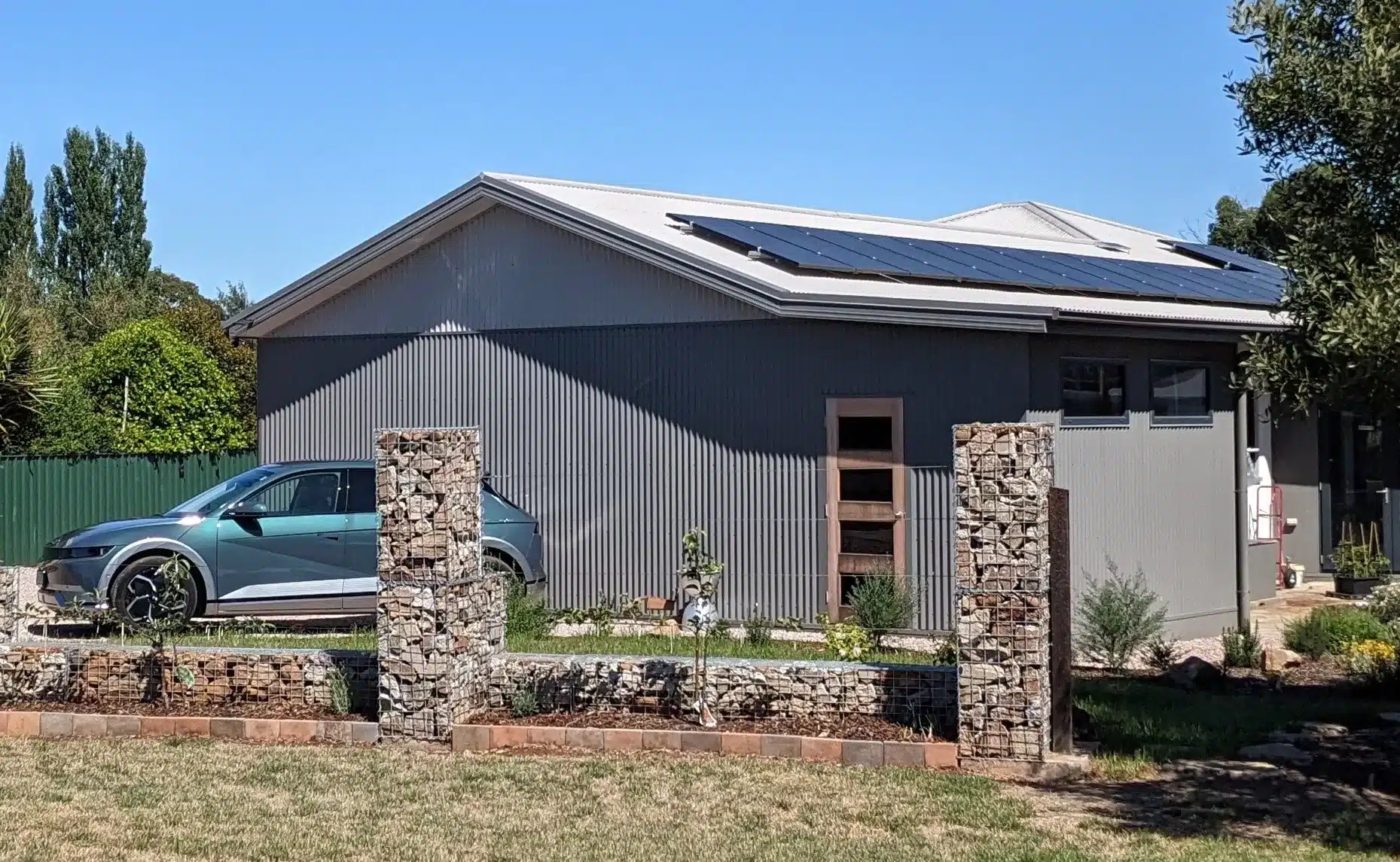Making sure that what you’re building will cope with future upgrades seems obvious, but when there is so much to plan and think about when organising a build, it’s easy to overlook the obvious. And when you are on a budget, there's a tendency to scrimp and save on the initial build, thinking, "I'll get to that later." So, you install the bare minimum energy system-fewer panels, a reasonably sized inverter, and battery storage. Water storage? I'll worry about that later. Let's just let the bank account recover.
Months or years down the track, when you're ready to make improvements, there are some things that would have been far cheaper to deal with at planning stages. It's worth stopping to consider prioritising what should be put off for later and what should be done during the build because it’s cheaper than doing them after. The following are examples.
We are now looking at increasing our water self-sufficiency and installing a tank. With a large roof catchment area, the house is well placed to feed a 15,000-20,000-litre tank. (We use about 120-150 litres a day, and we're in a temperate region that receives about 650mm/yr-at least for now. The changing climate could make rain more erratic.) Installing a tank means the plumber will replace the square steel downpipes with round poly pipes and dig trenches to connect to the stormwater infrastructure. I'm grateful we procrastinated and didn't rush into landscaping the affected area! The challenge of getting plants to establish and grow is hard enough without them being dug up.
We're still debating between a polyethylene or steel tank. Living in a bushfire-prone area, I can't help but envision the environmental impact of a blob of melted plastic. We're in a BAL 12.5 area, which is low risk (the highest score is 40) but at risk from ember and radiant heat. The 2019/20 bushfires in Victoria came within 10 kilometres of our place.
A nearby town counted 92 power outages in 12 months-I don't doubt our area experienced a similar number. This is why we're keen to install backup power. I have a BYD battery and Fronius inverter, both capable of providing backup. During the build, I assumed backup power would be automatically configured when the system was installed, but it wasn't. It wasn't until after installation, when I asked how to use it as backup, that I learned it wasn't configured and would cost an additional $2,000 or more to do so. This infrastructure could have been installed at minimal cost during the initial system and switchboard installation. A new solar and battery supplier I consulted was surprised that it wasn't included or even discussed. You don't know what you don't know-and this is one of those moments where I really wish the builders had brought it up. The risks of assuming.
I have since learned that the switchboard is already full, we're on 3-phase power which takes up more space, and adding more to it would require extra infrastructure.
Admittedly our issues might have been exacerbated because we dealt with a volume builder which had limited knowledge about renewable energy systems and energy efficient appliances, and, who in turn, outsourced the works to a third-party provider which, as it turns out, did the bare minimum. Perhaps if we had a relationship with the installers, service would have been better.
Plan for future water needs early: Instead of adopting an “I’ll think about it later” approach, research what’s involved in installing a water tank before finalising your plans. Installing tank plumbing during the initial build would have saved on labour costs for trench digging and avoided replacing downpipes later.
Be proactive about your solar and battery system: Don’t just accept a standard solar and battery package without question. Clarify what you need from your system, consider future energy needs, and discuss these with your builder beforehand to ensure the system can handle upgrades, like adding more panels or ensuring the inverter is the right size. Or better still, talk directly with the installers and ask questions, help them understand your needs.
Verify what’s included in your system installation: Just because a feature is advertised doesn’t mean it will be configured during installation. Confirm that the battery system you choose can provide backup power and ensure this is set up during the build to avoid costly post-installation adjustments.
Check and optimise appliance settings: Builders may leave appliances like heat pumps on default settings. For a home generating its own power, ensure the heat pump is programmed to operate during peak solar hours (10am–2pm). Discuss this with your builder before handover to avoid inefficiencies.


The experiences and opinions shared on this site and by homeowners are general in nature. The information is relevant to their situation and available at the time of their build or renovation. Products, situations, and contexts change. Please talk to a qualified architect, builder, or industry professional for advice specific to your circumstances. A small % of booking fees goes to Lived In Eco Homes.
Lived In Eco Homes acknowledges the Traditional Owners of the Country we work and build on. The founders live on Bunurong/Boon Wurrung Country.